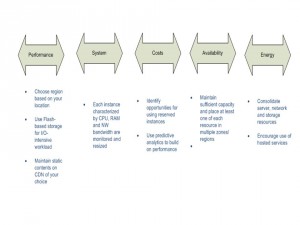Once an application workload stands-up in the cloud, it needs policies and procedures to enable friction-free cloud decisions, financial management and prevent unauthorized access or activities to the workload.
Having a cloud governance board may appear counterproductive however can serve to give a singular approach to living in the enterprise’s cloud environment. It can help answer questions like who “own” what portions of the cloud, architecture, costs, security and operational aspects.
Few key expectations in governing a cloud environment include:
- A service catalog to help standardize services for users, provide control on which users/groups can access these services, enable users to launch services on self-service basis.
- Security and compliance measures including data encryption, logging, network segregation etc.
- Single landing page for all requests


